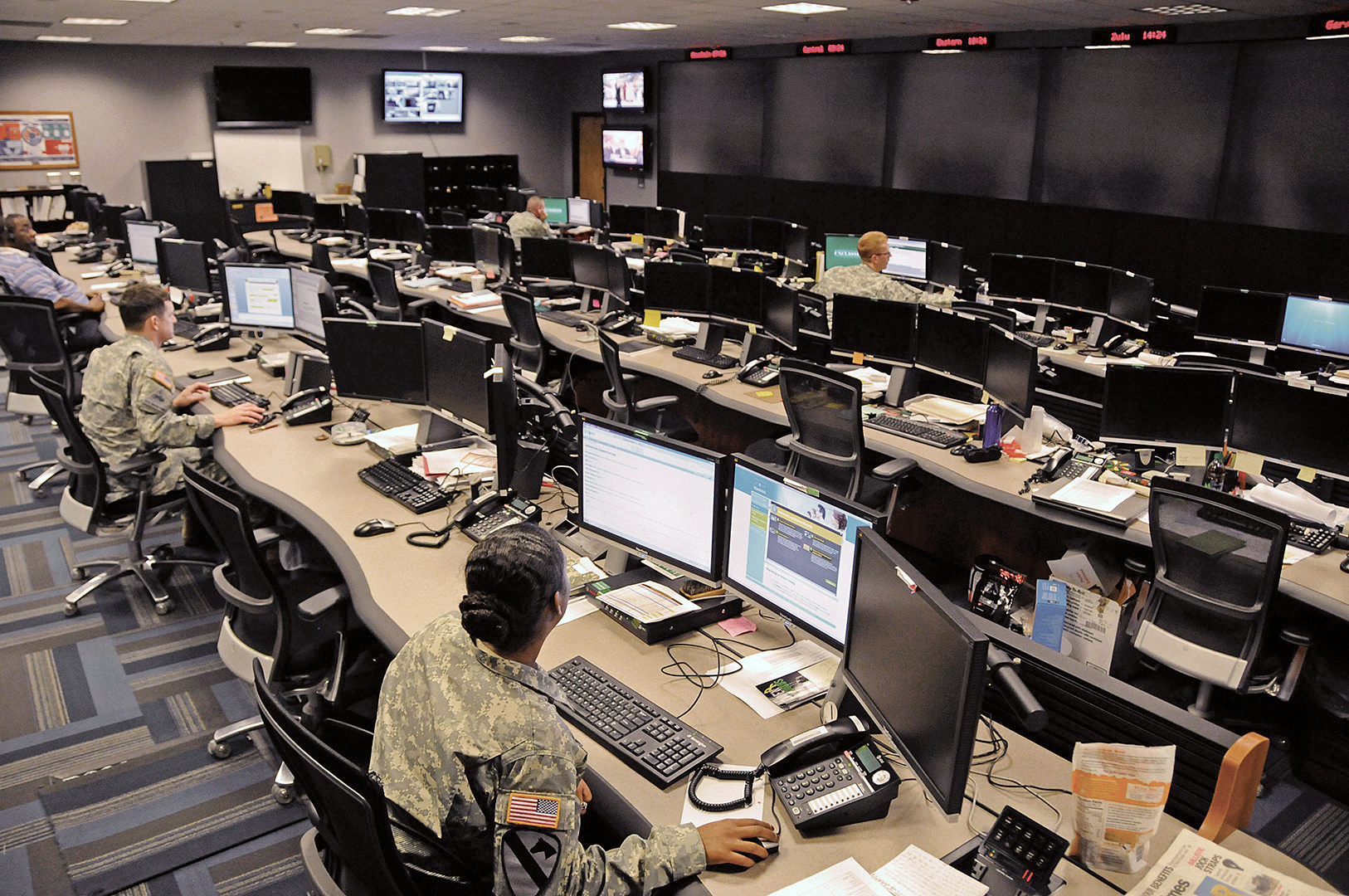
The Army has spent decades building what leaders say are artificial boundaries between the IT networks soldiers use at their home stations and the ones they use on the battlefield. And since that’s no way to win a war against a competent adversary, it’s time to finally bridge that divide, they say.
The Army will start implementing concepts that are meant to unify its enterprise and tactical networks as soon as next year. While some aspects of “home station mission command” — the idea that headquarters commanders should be able to command and control their forces just as effectively as if they were in the field — have already been implemented, the longer-term goal is to have those headquarters networks share a common architecture with tactical ones.
That goal turned into a concrete, enforceable requirement recently when the Army Requirements Oversight Council adopted a formal document defining what the Army calls “unified network operations,” said Lt. Gen. John Morrison, the deputy chief of staff for command, control, communications, cyber operations and networks.
“It lays out that unifying requirement to operate, maintain and defend the network, and that is a significant milestone,” he told an virtual audience convened by AFCEA this week. “No more will we be buying one set of network operations or security tools for the enterprise, and another set for tactical. We will be buying unifying capabilities that allow us to seamlessly see the network, and seamlessly secure and defend the network from end-to-end.”
Morrison said some of the initial movements toward that unified network are expected to happen next year. The Army has already made significant progress toward modernizing the networking equipment soldiers use on the battlefield through its new Integrated Tactical Network. A next big step will be to restructure the expeditionary signal battalions that connect those deployed forces to the broader Army enterprise.
That new construct, the Expeditionary Signal Battalion-Enhanced (ESB-E), is meant to be much more lightweight than current iterations: Able to deploy around the world on short notice, but with a set of equipment that’s compact enough to operate out of a single trailer.
“We’ll increase the capability of our formations, but with less people and less of a footprint so we can operate in a contested and congested environment,” he said. “But the ESB-Es were not the big idea. The big idea was aligning the personnel efficiencies that we gain by going to much smaller, much more agile, much more capable kit. We’ve already equipped our first two battalions and we will start building that globally, all the way down to the tactical level, with the appropriate force structure and the appropriate skill grades beginning next year.”
Exactly what the Army’s new unified network requirements will mean for industry is still unclear, but Morrison said he hopes to have answers soon. He said senior leaders are planning to finalize a new Army Network Plan in the next several months. That document will help to define what the common network architecture will look like.
Also yet to be determined is how the plan for a unified network will play into the service’s plan to largely outsource day-to-day network operations on its garrisons. The Army is still piloting the Enterprise-IT-as-a-Service (EITaaS) approach on three of its installations, and doesn’t expect to make any final decisions on the way ahead for the rest of its bases until 2023.
“We’re working through all of that, but the notion of the unified network merely would fit under that [EITaas] umbrella, or it would be a component of how we provide the unified network,” Morrison said. “The hope is we can be more effective and efficient by working with our industry partners, but the notion of the unified network in support of multi-domain operations is they have to be mutually supporting.”
But the Army’s Program Executive Office for Enterprise Information Systems, the development organization in charge of building and upgrading the Army’s current enterprise networks, said it’s already begun to pivot toward a unified network.
Currently, garrison networks have a very limited number of “touch points” to the Army’s tactical networks, said John Howell, the assistant PEO for networks, cyber and services.
“The modernization that we do is installation based. It’s based on a priority list, and right now there is no overarching architecture for [secret] networks. We are trying to change that,” he said. “But the real key here is to allow a soldier on the battlefield to be able to reach back and actually take full advantage of all of the resources that the enterprise network has to offer — from enterprise cloud capability to artificial intelligence and machine learning to identity and credentialing. Why are we doing that separately between the enterprise and the tactical networks?”
"network" - Google News
April 22, 2021 at 06:47PM
https://ift.tt/3eutQZY
Army to start unifying enterprise, tactical networks by next year - Federal News Network
"network" - Google News
https://ift.tt/2v9ojEM
https://ift.tt/2KVQLik
Bagikan Berita Ini














0 Response to "Army to start unifying enterprise, tactical networks by next year - Federal News Network"
Post a Comment